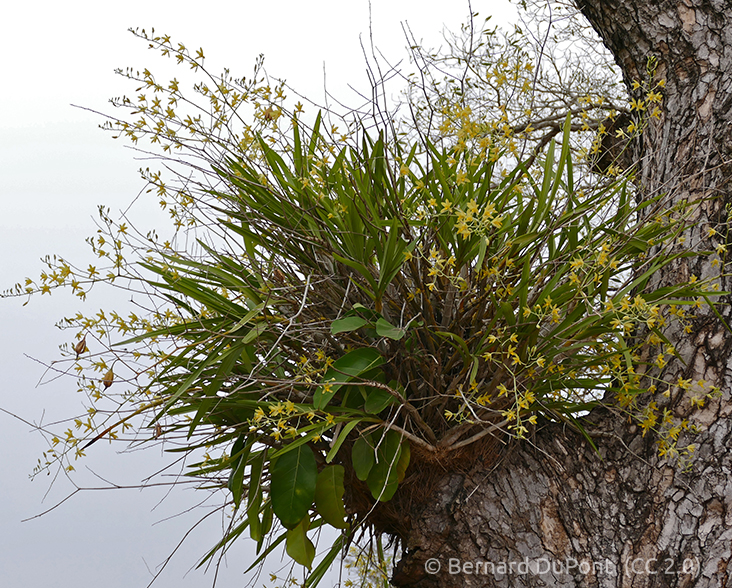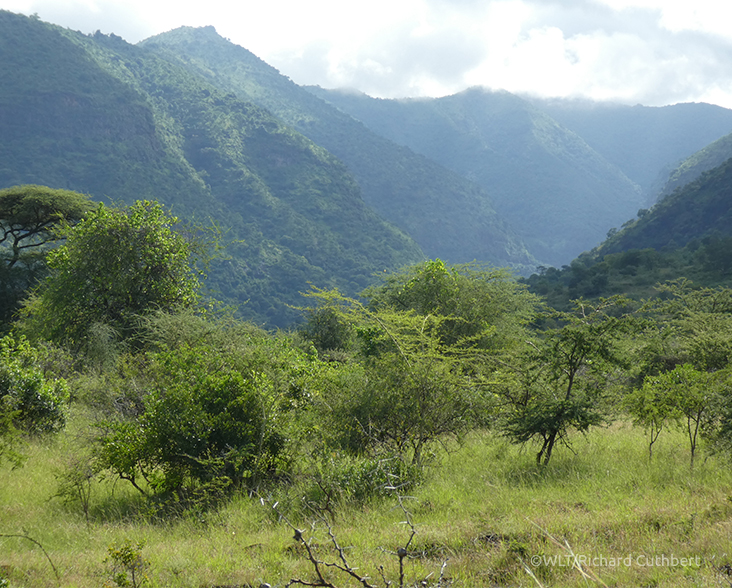Leopard Orchid
Species Data
Class: Liliopsida
Order: Asparagales
Family: Orchidaceae
Scientific Name: Ansellia africana
IUCN Red List status: Vulnerable
Description
Like many other orchids, the leopard orchid is an epiphyte. This means it establishes itself on tree branches but does not harm it as it doesn’t take anything from its host.
The plant’s long stems have yellow spindle-shaped swellings called pseudobulbs which can grow up to 60cm long. Its thick leathery leaves grow on alternating sides of the pseudobulb and can number around six or seven, with lengths between 15 and 50 centimetres. Each flowering stem growing off the top of the pseudobulbs can hold up to 100 flowers each.
The flowers of this orchid can grow up to around 3cm across and have yellow petals with reddish brown or maroon spots and markings which vary across flowers.
Behaviour
The plant anchors itself to the surface of the trees on which it grows by aerial roots. It then has another set of roots which grows skywards, forming a container-like shape which catch falling debris. This is where it gets one of its common names from: the ‘trash-basket orchid’. This debris is then decomposed by a fungus that lives together with the orchid, the nutrients from which are then absorbed by the orchid’s roots.
The plant’s pseudobulbs on the stems store water and nutrients, giving the orchid resilience during times of drought.


Habitat and Range
The leopard orchid is found across the tropical and central regions of Africa, often in hot dry mixed deciduous woodlands. It lives mostly in coastal regions, or in riverine vegetation, growing on trees and shrubs at medium to low altitudes.
It is popular in both traditional African medicines and the collections of orchid fanatics.
Overcollection of the species, along with habitat loss and land use change, have led to the leopard orchid experiencing a decline in populations and is listed as Vulnerable by the IUCN.
